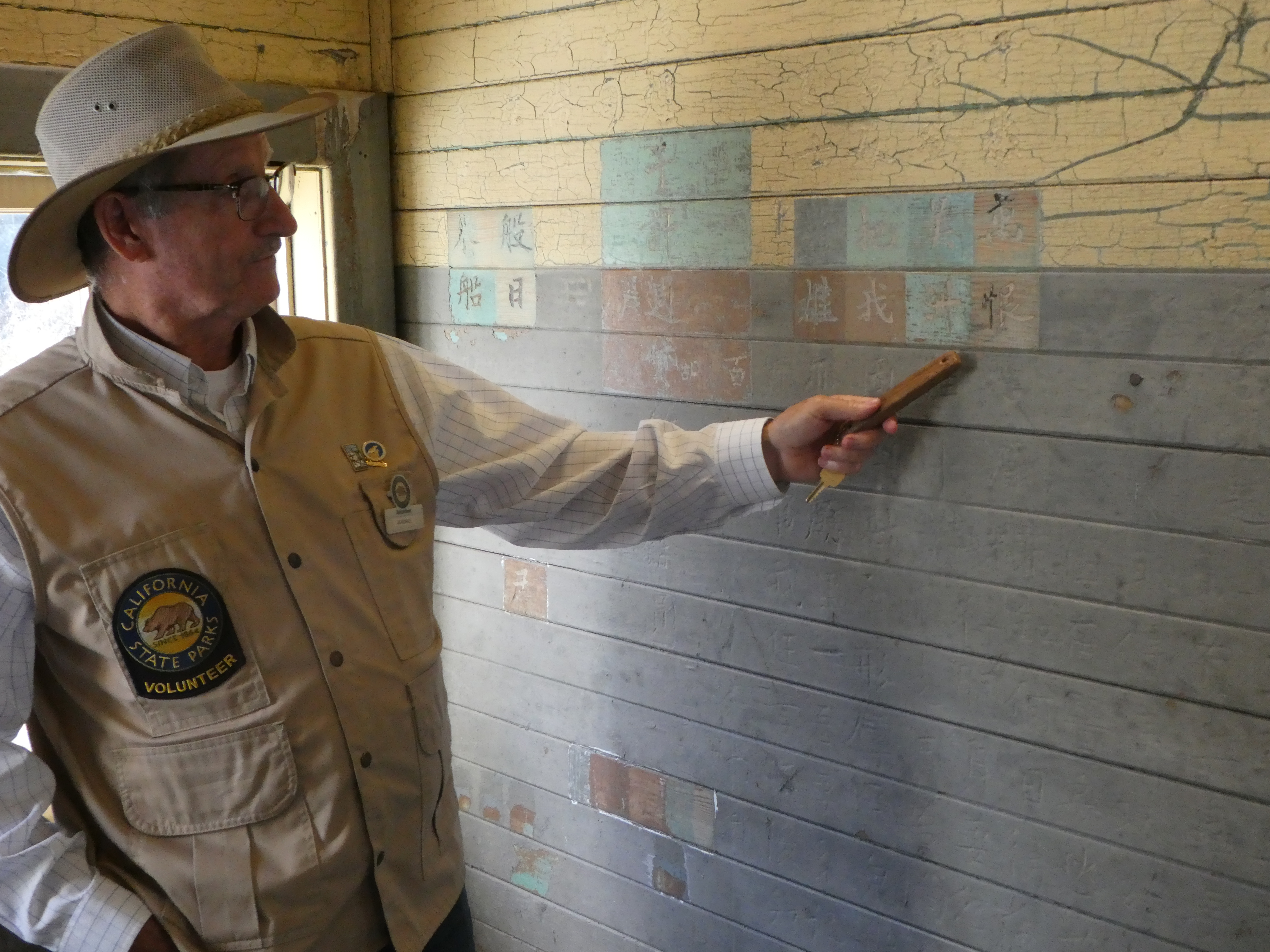The poems embedded in the walls by former detainees at the Angel Island Immigration Station in San Francisco Bay are covered by paint and often tricky to spot for first-time visitors. But once you’ve seen the verses etched into the redwood in classic Chinese characters, and find out what they mean, they leave an indelible, haunting impression.
“Imprisoned in the wooden building day after day/ My freedom withheld; how can I bear to talk about it?,” a Chinese immigrant in the first half of the 20th century wrote.
“Nights are long and the pillow cold; who can pity my loneliness?/After experiencing such loneliness and sorrow, Why not just return home and learn to plow the fields?”
The world-renowned architect I.M. Pei, who designed the pyramid entryway to the Louvre in Paris, spent one day at Angel Island, on August 28, 1935, after sailing from China on his way to architecture school in Pennsylvania. He was one of the lucky few who, with his banker father sponsoring him, breezed through.
“In contrast to many Angel Island immigrant stories of isolation and despair, Pei’s memory of his arrival at Angel Island is one of joy and excitement,” the Angel Island Immigration Station Foundation says on its website. In a 2006 speech Pei, who is now 100, said that after an 18-day crossing, “on the last night, I didn’t sleep. I was on the deck watching, watching for the San Francisco Bay. And when it appeared, it’s a moment, I tell you, I have never experienced again, a moment of great joy, expectation and excitement.”
More typical were the stories of the million Asian immigrants who were processed through what is sometimes called “the Ellis Island of the West” and spent months there. Unlike its eastern counterpart, in New York Harbor, within sight of the Statue of Liberty, Angel Island was not a welcoming place. At Ellis, most immigrants were released in a day. At Angel, some detainees were kept for 18 months or longer and almost one in five was deported.
That was because its purpose was to exclude rather than include. A big reason the immigration station was opened in 1910 was to enforce the Chinese Exclusion Act of 1882, the first time (until Donald Trump) that the federal government enacted a law targeting and barring workers of a specific ethnicity. The 10-year ban was renewed numerous times and was not allowed to expire until 1943, three years after the immigration station was closed, to be re-purposed for prisoners of war.
“The Chinese immigrants were treated the worst because their government was completely powerless and couldn’t help them,” Marshall Grimes, a volunteer guide said during a recent tour. The tour shows visitors the walls engraved with the Chinese poems, and the utilitarian living conditions, with stacked, metal-frame bunk beds. The facility was designed to hold 275 people but often was packed with 400 to 700, Grimes said.
The Chinese, who were the largest single immigrant group to pass through Angel Island, were subjected to all sorts of other humiliations. They were forced to enter buildings through separate entrances, were confined to a Chinese-only recreation area, and, upon arrival, had to undergo a physical examination that violated Chinese taboos on touching the human body. The doctor’s white clothing meant they represented Death to the Chinese, Grimes said.
The long stays and grim conditions the Chinese endured found an outlet in the poems the detainees inscribed in the walls — some 220 of them that were seen as graffiti and for the most part covered over with paint and putty. They probably would not have survived had it not been for the efforts of parks department worker Alexander Weiss. Assigned to Angel Island in the early 1970s, Weiss was determined to find out what was inside the by-then abandoned, and locked, immigration station that was due for demolition. He spotted the characters on the wall and brought them to the attention of a professor at San Francisco State. That led to a suggestion that he get people from San Francisco’s Chinatown to have a look, and they told him they were poems written in classical Chinese style, and good poems at that.
“Sitting alone in the customs office/How could my heart not ache?
“Had my family not been poor/I would not have traveled far away from home,” reads another poem.
In a touching article about Weiss, who died in 2014, on the foundation’s website, Weiss is quoted as saying: “I didn’t ‘discover’ the carvings. But to save the Immigration Station, I got in the car and turned on the ignition. That’s what I did. And then…all these other people got in the car and stepped on the gas and made it move to where it is today: a National Historic Landmark.“
Any visitor to Angel Island who stops by the Immigration Station should give a thought to Weiss’s contribution to preserving a treasure of the human spirit — and to the power of that spirit which allowed the tens of thousands of Chinese and other immigrants to overcome their difficult passage into the United States. In all these years, only the countries from which they make their way to America have changed.
— Michael Roddy
